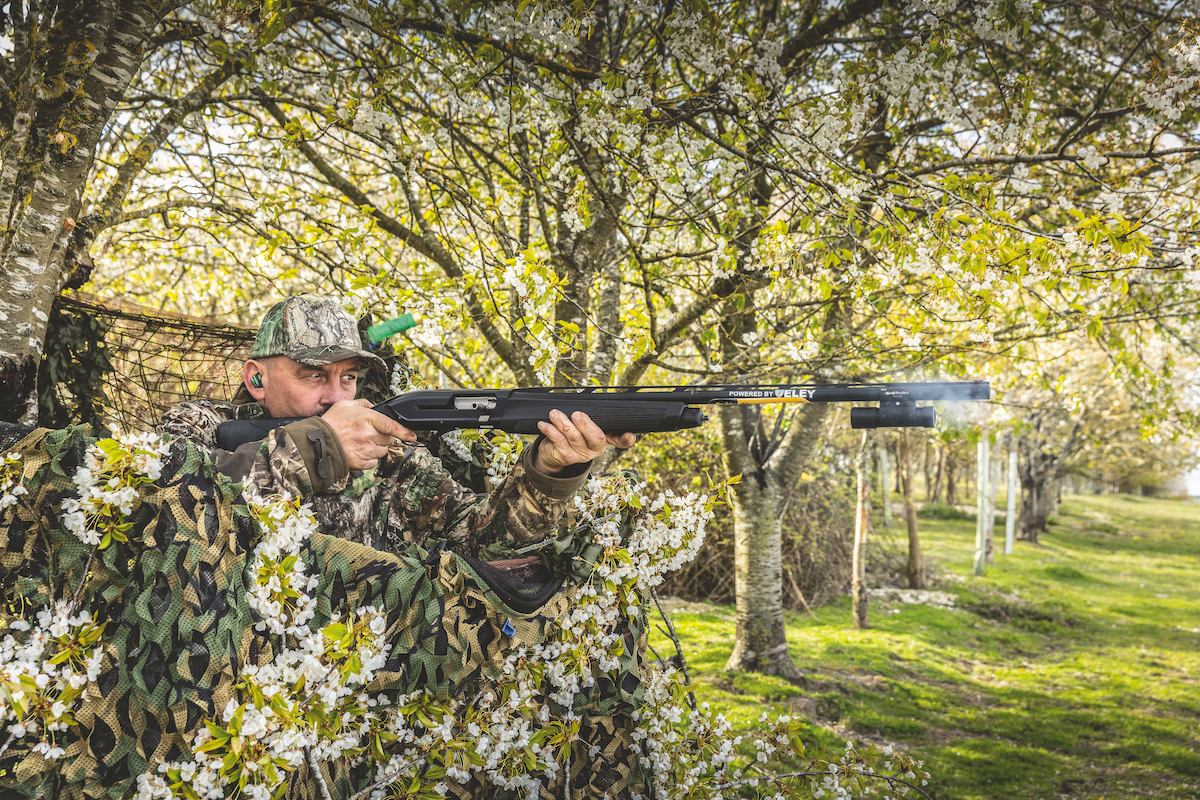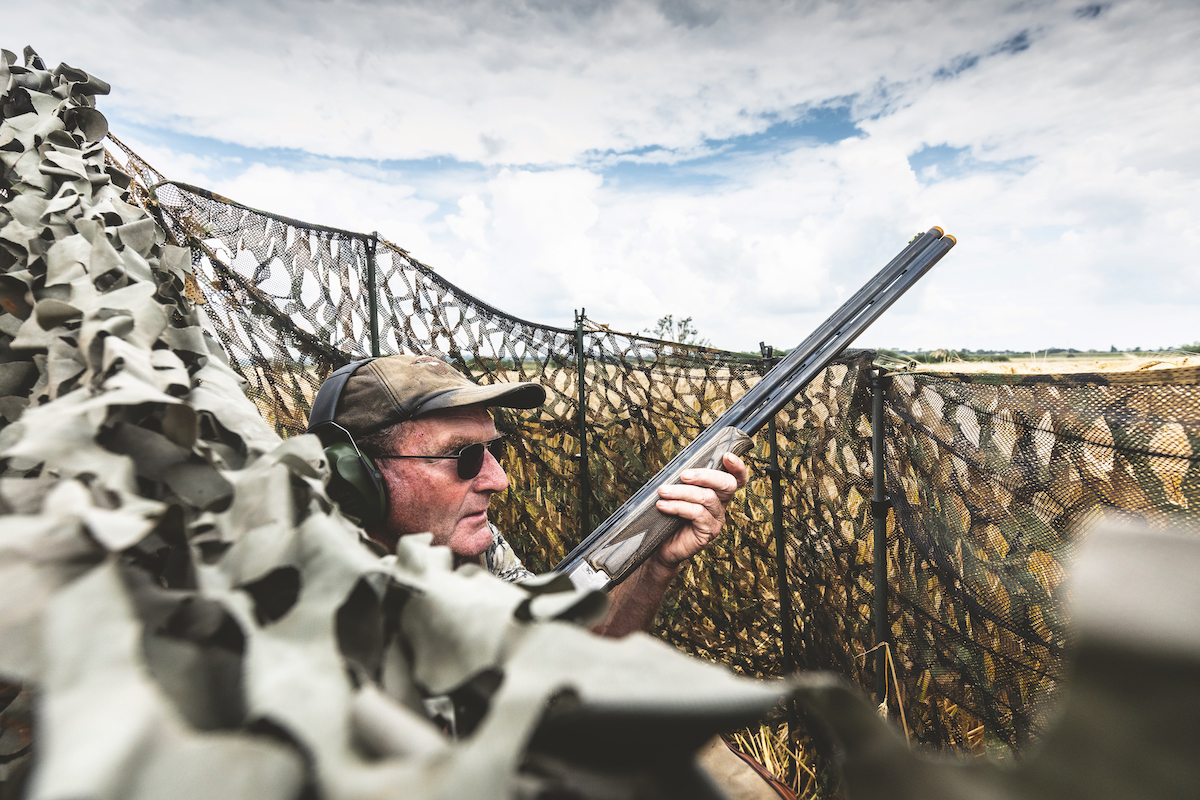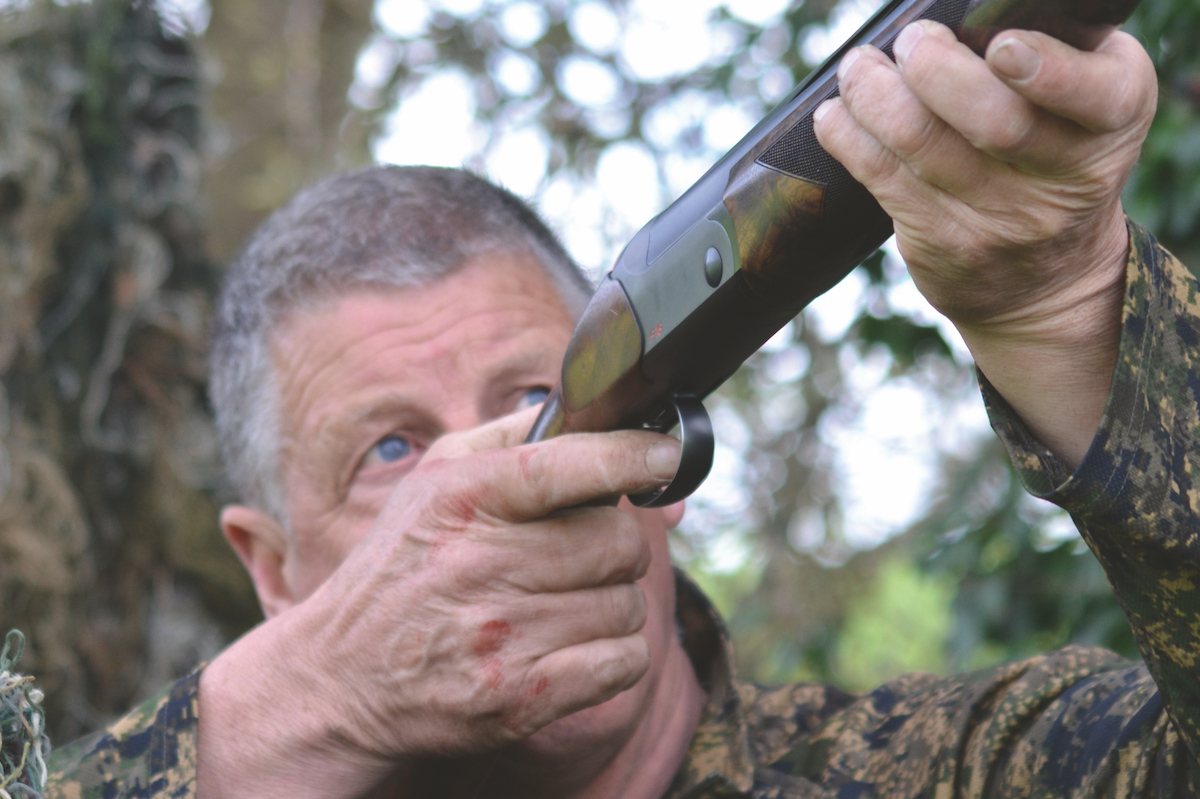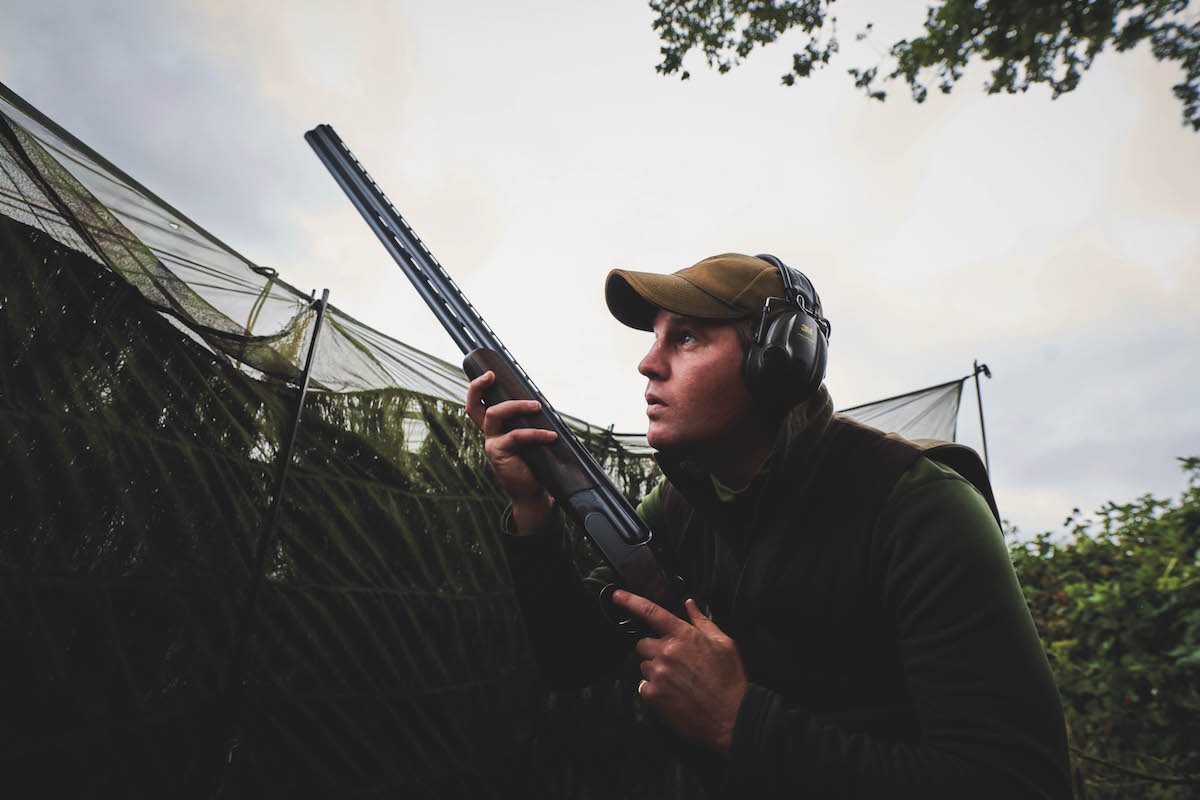Spring clean!
Geoff Garrod continues to be mystified by the lack of pigeons on his patch this year but is optimistic of better days ahead

Geoff has found crop protection tough this year, with smaller volumes of pigeons around
As I’m writing, the rape has grown high enough to be fairly safe from pigeon damage, except for some bare patches that will never come to much. The spring drilling has long since been completed and the wheat and barley are safe at this stage of their growth. So, I’m sitting back and having a review of the shooting so far this year.
And I can tell you, it’s been tough. The most common question I get asked when I’m at shows with the National Gamekeepers’ Organisation is: where have the pigeons gone? I don’t seem to be the only one finding the decoying hard this year. There have been odd occasions when things have gone well – I had a couple of good nights in the woods roost shooting, and I’ve recently had a good day decoying over rape when the birds actually decoyed, which makes me optimistic for the summer. Incidentally, you can watch that day on The Shooting Show.

A good dog is the best way to pick up pigeons
Slim
Apart from these highlights, it’s been slim pickings. There just doesn’t seem to be the volume of birds in my area of Essex and the ones that have been causing damage have been extremely uncooperative when it comes to getting shot. I have a few very unscientific theories as to why it’s been such a slow year for pigeons so far, and perhaps it’s a combination of all three of them?
The first theory is that bird flu may have reduced the number of pigeons. I know the toll on gamebirds has been high from this disease, so I’m assuming that the pigeon flocks will have suffered a similar fate. I have no direct evidence and I’ve seen no reports about the pigeon population and how it has been affected. The flu is in the wildfowl and gamebird populations, so it’s highly unlikely to not be in the pigeon population too. If anybody knows of any research, I’d be very interested to know what they found.

Decoying has been hard work so far this year
Second, there are fewer flocks of woodpigeons crossing the English Channel now. I used to hear tales of massive numbers being spotted all along the south-east coast. We know that there is much more rape and maize being grown in northern France now, so perhaps there is just less need for these highly mobile flocks to expend energy crossing the Channel to find food? Again, I’d love to know if there is any research into woodpigeon migration.
My third theory is I know that the neighbouring estate has plenty of rape and they’re extremely diligent about protecting it. I have mentioned before that they have employed somebody to spend all of his day chasing and scaring pigeons off their crops. He fires rockets over them, drives around and shoots at them and puts bangers and flags out to keep them on the move. The pigeons are continually being disturbed when they settle on a field. This is all well and good, but it doesn’t ultimately sort the problem out, it just moves the problem on.

Eley VIP Steel Pro Eco are Geoff’s cartridge of choice
The reason that woodpigeons are on the general licence is that shooting them is the only sure way of stopping them from causing damage. We do have to try non-lethal methods to protect the crops first, but I’m in no doubt that reducing their numbers is by far and away the best option. Chasing them around the countryside stops them feeding for a short time, but they have to feed and will drop in somewhere to get a cropful. But perhaps this constant disturbance is pushing them away from my area?

Geoff Garrod
Contrary
I know some of this sounds a little contradictory – complaining about the lack of pigeons while the aim of pigeon shooting is primarily to protect crops and reduce their numbers. There is still plenty of damage being caused though, and it feels to me like the flocks are more nomadic these days. I still see large bags being shot on social media, so there must be good numbers in some areas. Big flocks seem to appear around here but then disappear in a flash. I will have to see what develops over the next few months.

The next few months should bring more action, as the young pigeons will soon be fledging
So what’s up next for my decoying? If you’re lucky enough to have peas in your area, protecting that land should keep you busy for now. We have no peas on the estate, so my next opportunity to get back in a hide will be shooting over laid barley. We have wheat, but the new varieties of wheat have such short stems these days, it would take a hurricane to flatten it. The barley, however, is prone to fall over in a big wind or strong rain. Laid (flattened) patches are a big draw to pigeons as they just love the heads of barley before they become too ripe.

The spring drilling has long since been completed, but the summer offers shooting over laid barley
There are a few things that are important to think about when shooting over barley. I hate to see shot birds go to waste or, even worse, not even get picked up at a day’s end. So, with this in mind, you have to be restrained and do your best to shoot birds over the open laid areas of the crop. This gives you the best chance of picking them later. Finding birds in standing crops isn’t easy, even if you mark them well. Even picking them in the laid areas can sometimes be challenging; if the birds have come down beak first or on their backs they often slip between the barley stalks and disappear from view, but at least you’ll have a defined and smaller area to search.
 I would advise that you take a dog along if you have one as if you do land a bird in the standing crop, a dog’s nose will be invaluable. If the weather is especially hot, I sometimes prefer to collect the dogs at the end of the day and get them to do a good sweep of the area after I’ve picked all the birds I can. I know that won’t be possible for everyone, especially if you’re shooting a good distance from home, but it’s worth considering if you can. If you do have to keep your dog with you all day, think about its welfare and find it a shady spot and ensure you have plenty of water for it.
I would advise that you take a dog along if you have one as if you do land a bird in the standing crop, a dog’s nose will be invaluable. If the weather is especially hot, I sometimes prefer to collect the dogs at the end of the day and get them to do a good sweep of the area after I’ve picked all the birds I can. I know that won’t be possible for everyone, especially if you’re shooting a good distance from home, but it’s worth considering if you can. If you do have to keep your dog with you all day, think about its welfare and find it a shady spot and ensure you have plenty of water for it.
 I’m looking forward to the next few months as the young will fledge soon and things should improve regarding pigeon numbers, though the farmer may disagree. With my pigeon shooter hat on, despite the aforesaid, my last outing was encouraging at least.
I’m looking forward to the next few months as the young will fledge soon and things should improve regarding pigeon numbers, though the farmer may disagree. With my pigeon shooter hat on, despite the aforesaid, my last outing was encouraging at least.









